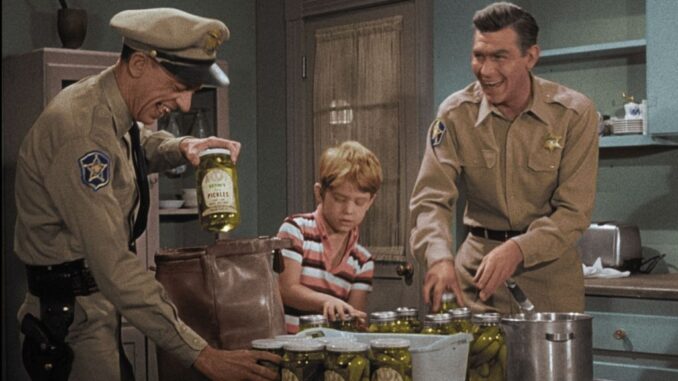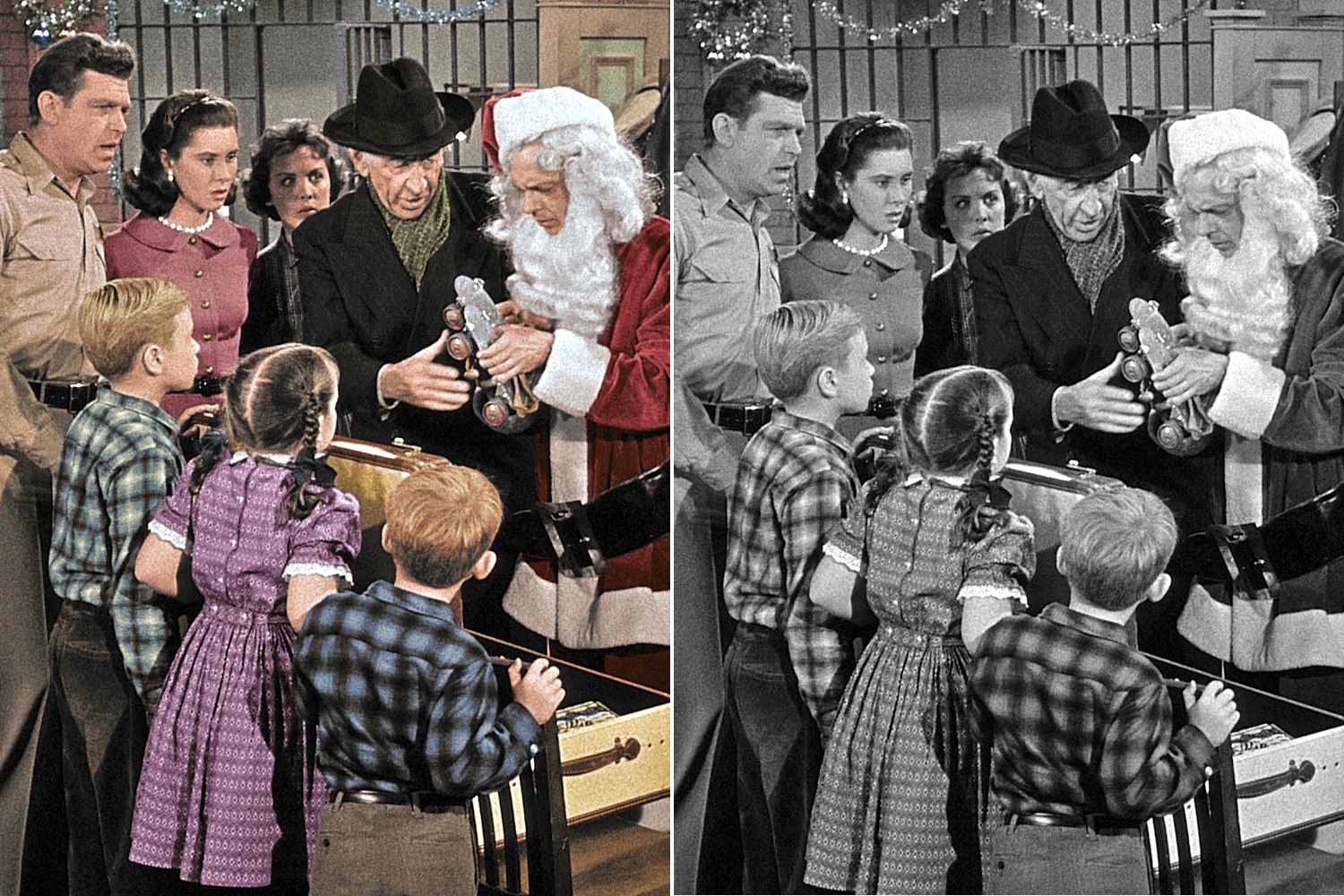
Introduction: A Splash of Color in Mayberry
“The Andy Griffith Show” is one of those iconic series that generations grew up with. Whether you were glued to the screen during the original broadcast or binge-watching reruns on MeTV, you’ve probably noticed something curious—some episodes are in black-and-white, and others burst into color. But how many seasons of The Andy Griffith Show were actually filmed in color?
Let’s walk through this nostalgic lane, answer that question definitively, and uncover the impact of this visual shift on one of America’s most beloved TV shows.
The Simple Answer: Just 3 Seasons in Color
Out of the show’s eight total seasons, only the last three seasons—Seasons 6, 7, and 8—were filmed in color. That’s right: the first five seasons (1960–1965) were entirely black-and-white. The color episodes began in Season 6 (1965–1966), following a broader trend in network television at the time.
Why the Show Began in Black and White
Television in the Early 1960s
In the early 1960s, color broadcasting was still a luxury. Most households owned black-and-white TVs, and networks hadn’t fully committed to color production. CBS, like many networks, didn’t transition all shows to color until the mid-1960s.
Budget and Technology Constraints
Color filming was more expensive and technically demanding, requiring different lighting setups and cameras. With The Andy Griffith Show already a hit in black-and-white, there was no urgent need to change—until audience expectations shifted.
The Transition to Color in Season 6
What Sparked the Switch?
The 1965–1966 TV season marked a turning point. CBS and other major networks decided to go “all-in” on color broadcasting. It was part of an effort to stay modern and appeal to the growing number of homes with color TVs.
How Did the Show Change Visually?
Fans immediately noticed a difference: Mayberry looked brighter, the scenery more vibrant, and the characters—especially Aunt Bee’s dresses—popped on screen. But the content remained the same: small-town charm, gentle humor, and wholesome storytelling.
Did the Color Seasons Feel Different?
Subtle Shifts in Tone
While the switch to color brought new visual appeal, many fans agree that the tone of the show subtly shifted. With Don Knotts (Barney Fife) leaving after Season 5, the show’s dynamic changed—right as it transitioned to color.

Barney’s Absence Coincided With the Color Era
It’s hard to talk about color seasons without mentioning Barney Fife’s exit. Knotts was the comedic engine of the black-and-white years, and his reduced presence in the color seasons affected the show’s rhythm. Coincidence? Maybe. But for many, the black-and-white seasons still feel more “classic.”
Season-by-Season Breakdown
Seasons 1–5 (1960–1965) – Black and White
-
Don Knotts at his peak as Barney Fife
-
Tight, character-driven stories
-
Emmy-winning humor
-
Nostalgic, filmic aesthetic
Seasons 6–8 (1965–1968) – Color
-
Introduction of Warren Ferguson (briefly) as deputy
-
Andy becomes more serious, less comedic
-
Visual upgrade, but tonal downgrade according to some fans
Behind-the-Scenes Insights on the Color Transition
Andy Griffith’s Take
Andy Griffith wasn’t thrilled about the transition. He often reflected that the show’s heart was strongest during its earlier, black-and-white years. Even he felt that once the color came in, something else went out.
Don Knotts’ Emmy Exit
Knotts left after Season 5 to pursue film, believing the show would end. When it was renewed—this time in color—he didn’t return as a regular. The timing of his departure and the color transition is a major turning point in the show’s legacy.
Color vs. Black-and-White: Which Is Better?
The Fan Debate
Ask any long-time fan, and you’ll get strong opinions. Some say the color seasons lack the soul of the earlier episodes. Others enjoy seeing Mayberry in full bloom. But one thing’s for sure—both eras have their charm.
Syndication Preferences
Interestingly, many syndication packages focus on the black-and-white episodes. Networks like MeTV often air the early seasons more frequently, suggesting that those remain the most popular with audiences.
The Final Season: A Quiet Goodbye
Season 8 Closes the Curtain
The final season (1967–1968) wrapped up the show’s long run. Andy Taylor gradually stepped back to make way for the spin-off “Mayberry R.F.D.”, and the final episodes retained the color format but shifted the focus to newer characters.
A Transition Into ‘Mayberry R.F.D.’
The transition into “Mayberry R.F.D.” was smooth but signaled the end of an era. Though in color, the magic of the original formula was harder to recapture without Andy’s central presence and Barney’s comedic spark.
Cultural Significance of the Color Seasons
Reflecting a Changing America
The move to color wasn’t just about visuals—it reflected a nation changing in style, values, and technology. Color TV symbolized a more modern world, but with it came the slow fade of simpler storytelling.
Preserving the Past
Thanks to restoration and remastering, today’s fans can experience both color and black-and-white episodes in crisp HD. It’s a beautiful way to preserve the journey of a show that began in a slower, simpler time.
Conclusion: The Colorful Legacy of Mayberry
So, how many seasons of The Andy Griffith Show were filmed in color? Just three out of eight. But those three seasons tell a story beyond hues and tones—they reflect a pivotal moment in TV history, where storytelling traditions met modern broadcasting.
Though the black-and-white episodes often steal the spotlight, the color seasons hold a unique place in the show’s legacy. They remind us that while the format may change, the spirit of Mayberry remains the same—timeless, heartfelt, and unforgettable.
5 Unique FAQs About the Color Seasons of ‘The Andy Griffith Show’
1. Why weren’t all the seasons of The Andy Griffith Show in color?
Color TV wasn’t widespread or affordable when the show began in 1960. Networks didn’t fully switch to color until the mid-1960s.
2. Did Don Knotts ever appear in the color episodes?
Yes, he made a few guest appearances in the color seasons after his regular role ended in Season 5.
3. Are the color episodes considered worse than the black-and-white ones?
Not necessarily “worse,” but many fans feel the show lost some of its charm and chemistry after Don Knotts left and the show switched to color.
4. Is “Mayberry R.F.D.” considered part of The Andy Griffith Show?
It’s technically a spin-off but continues the same setting and some characters. It also was filmed entirely in color.
5. Where can I watch the color seasons today?
They’re available on streaming platforms like Pluto TV, Amazon Prime Video, and DVD box sets. Many also air on MeTV and similar nostalgia networks.
Would you like me to create a second part focused just on the black-and-white seasons’ historical value, or dive deeper into Barney’s impact on those first five seasons?
